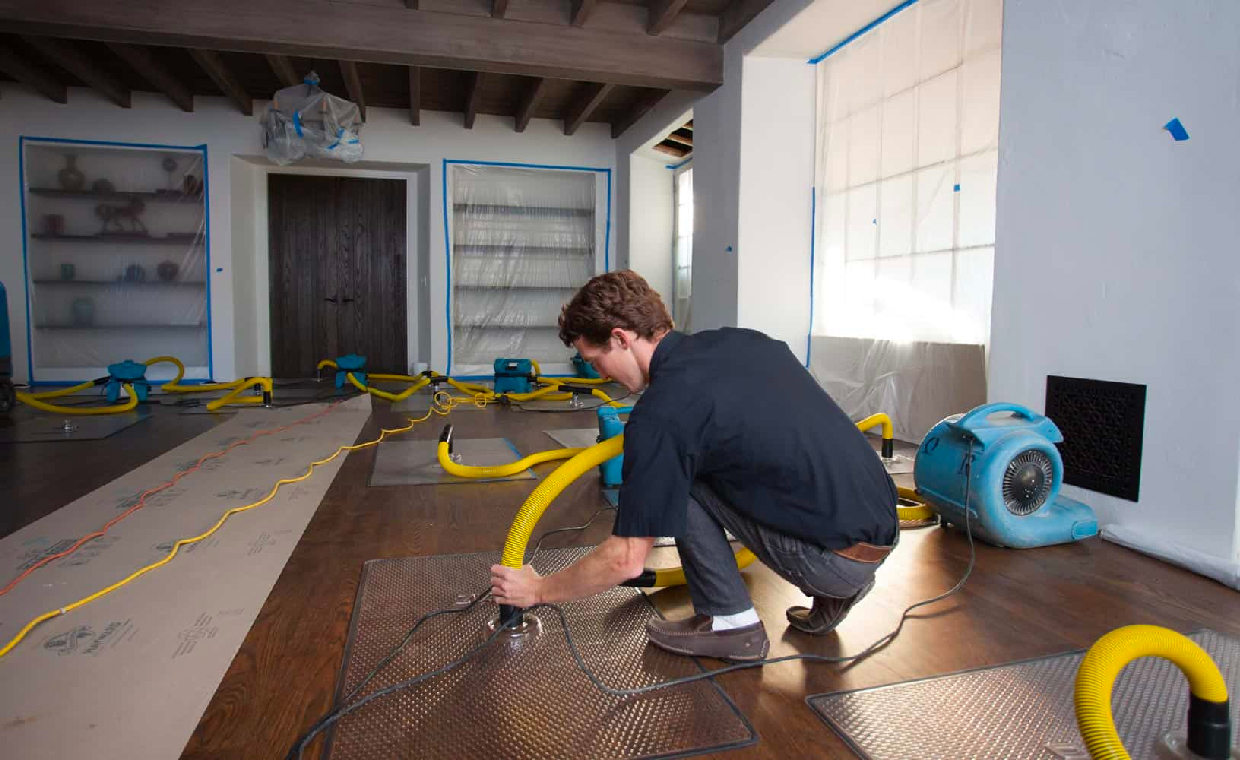Whether from a flood, a roof leak, or a burst pipe, water damage can happen at any time. The aftermath can be overwhelming, leaving behind soaked carpets, damaged walls, and potential mold growth. Fortunately, professional water damage restoration companies follow a systematic, proven process to return your home or business to its original condition. Hiring a professional water restoration company ensures that every step of the recovery process—from extraction to repairs—is handled efficiently and thoroughly. You can make sure the restoration is done correctly and know what to anticipate by being aware of each step.
Step 1: Emergency Contact And Rapid Response
When it comes to water damage, time is of the essence. That’s why reputable restoration companies offer 24/7 emergency services. Once you call, they’ll ask key questions to understand the nature and extent of the damage. This initial information helps them prepare the necessary tools and personnel before they even arrive. Rapid response reduces the risk of further harm and begins the recovery process immediately.
Step 2: Inspection And Damage Assessment
Upon arrival, the restoration team conducts a thorough inspection of the affected area. They assess the type of water involved—whether it’s clean, gray (slightly contaminated), or black (heavily contaminated, such as from sewage). This categorization affects how the water is handled and what safety precautions are necessary.
They also determine the class of water damage, which ranges from Class 1 (minimal absorption) to Class 4 (deep saturation in materials like hardwood or concrete). Understanding the scope of the damage allows the team to develop a customized action plan for the restoration process.
Step 3: Water Extraction
The next step is removing all standing water. High-powered pumps and industrial-grade vacuums are used to extract water quickly from floors, carpets, and other surfaces. This step is essential to prevent further water seepage and to speed up the drying process. In some cases, technicians may move furniture or remove baseboards and flooring to access hidden pockets of moisture.
Step 4: Drying And Dehumidification
After the bulk of the water is removed, the drying process begins. This involves using specialized equipment like air movers and dehumidifiers to pull moisture out of the air and affected materials. Walls, flooring, and furniture that absorbed water must be thoroughly dried to prevent mold growth, warping, or structural issues.
Technicians monitor humidity levels and moisture content daily, adjusting the equipment as needed to ensure complete drying. Depending on the extent of the damage, this process may take several days.
Step 5: Cleaning And Sanitizing
Once everything is dry, it’s time to clean and disinfect. Water damage often brings contaminants into your space, especially if the source was a sewage backup or natural flood. Restoration professionals use antimicrobial treatments to sanitize surfaces and prevent bacteria and mold growth.
They’ll also clean personal belongings, such as clothing, rugs, and furniture, using various cleaning methods. In some cases, odor removal techniques like fogging or ozone treatments are used to eliminate lingering smells.
Step 6: Repairs And Restoration
The final stage involves repairing and restoring your property to its pre-damage state. This may be as simple as replacing drywall and repainting, or as complex as rebuilding entire rooms. Some restoration companies offer full-service construction, while others may coordinate with outside contractors.
This phase focuses on both function and aesthetics—ensuring that the space not only looks like new but is structurally sound and safe for occupancy.
Bonus Step: Communication And Documentation
Throughout the process, a reliable restoration company keeps you informed. They document each stage of the work, provide updates, and often assist in filing insurance claims by working directly with adjusters. This communication ensures transparency and helps speed up the recovery both emotionally and financially.
Conclusion
Water damage can be devastating, but with a professional restoration team and a structured process, recovery is possible—and often faster than you might expect. From emergency response to final reconstruction, each step is crucial to ensuring a safe, clean, and fully restored environment. Understanding this process can give you peace of mind and confidence during a stressful time.

